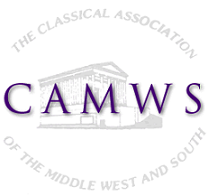Uarie uiae reportant. “Branching roads bring back by varied ways.” The eleventh and last line of Catullus’ poem 46 has echoed in my head while working on issue 14.1 of Teaching Classical Languages (TCL). The old friends he addresses who left for places far away from home (longe quos simul a domo profectos) return via different directions back to where they all began from. So do the three articles of this issue each approach the teaching of ancient languages by various means, to reach students who come to our classrooms via different paths.
Maxine Lewis’ article “Patchwork Assessment for Latin Learning: Case Studies of Inclusive Pedagogy” explains how to implement a non-traditional approach to grading in which each student chooses assignments that best suit their interests and strengths. A sample of student feedback documents the benefits of patchwork assessment and the author’s rubrics offer additional insights.
Giulio Celotto’s article “Introducing Female Voices in the College Latin Classroom: A New Course on Roman Women Writers” demonstrates how to design such a Latin course. If you are considering teaching a similar class, the article clearly presents how to do so, while recounting how motivated students were to translate and learn about ancient women writers.
The third article by Stephen M. Trzaskoma, “A New Mora-Based Method of Teaching Classical Greek Accentuation,” lays out both a rationale and the steps for teaching Greek accentuation based on morae. If you have ever seen students give up on understanding accentuation — or, worse, on learning Greek altogether— a mora-based method is worth at least considering.
Many thanks to outgoing editor Yasuko Taoka, who did the initial editing of some of the articles for this issue, and to our Editorial Assistant, Katie Alfultis-Rayburn, whose work is prized and priceless.

